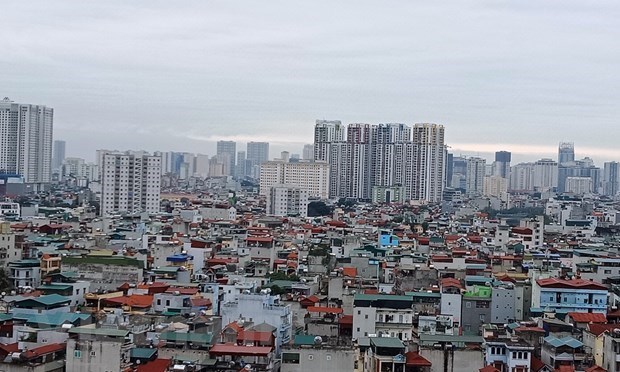 |
| Credit for real estate are set to be further tightened in the coming time |
Authorities are planning to continue tightening credit for real estate in the time ahead, which is hoped to have positive impacts on the market, heard a forum in Hanoi on May 4.
Chairman of the Vietnam Association of Realtors (VARS) Nguyen Manh Ha said credit for real estate will be under stricter control in the coming time as the central bank is collecting opinions about a draft document which will replace its 2014 circular on prudential ratios in operations of credit organisations and foreign banks’ branches.
Under this draft, the maximum rate of short-term capital used to fund medium- and long-term loans will be reduced to 30 percent. Meanwhile, the capital-to-risk weighted assets ratio will be raised from 50 percent to 150 percent for personal loans of 3 billion VND and above.
These amendments are set to have considerable influence on the real estate market, Ha predicted.
Dr. Vo Tri Thanh, former Deputy Director of the Central Institute for Economic Management, said in the long run, Vietnam’s property market will remain attractive to foreign investors.
He added the monetary policy will be tightened in a way that gives the top priority to banks’ health so as to ensure macro-economic stability. Therefore, capital sources will be controlled, but they will be healthy.
Echoing this, Nguyen Manh Khoi, Deputy Director of the Construction Ministry’s department for housing and property market management, said the newly issued policies and the regulations that are going to be revised are expected to have positive impacts on the market, but they need some time to prove their effect.
The central bank’s tightening of credit for real estate will also be a chance for businesses to restructure their investment strategies and financial resources, he noted.
According to VARS Chairman Ha, the property market still recorded stable development in 2018 with good growth in supply and successful transactions in all segments.
Notably, apartments accounted for the majority of the housing supply in Hanoi and Ho Chi Minh City, at 87.2 percent and 89.7 percent, respectively. The rate of mid-end apartments made up 41.3 percent of the supply, higher than that of affordable ones.
The market tended to become stagnant in the first quarter of 2019, when the housing supply fell 25 percent in Hanoi and 50 percent in HCM City compared to the same period last year, Ha said.
Meanwhile, both supply and transactions of tourism property have continued developing strongly in many localities, not only in popular attractions like Da Nang or Nha Trang cities but also other potential destinations, including Quy Nhon city (Binh Dinh province), and Quang Binh, Quang Ninh, Binh Thuan and Ninh Thuan provinces, he added.-VNA
 Authorities are planning to continue tightening credit for real estate in the time ahead, which is hoped to have positive impacts on the market, heard a forum in Hanoi on May 4.
Authorities are planning to continue tightening credit for real estate in the time ahead, which is hoped to have positive impacts on the market, heard a forum in Hanoi on May 4.